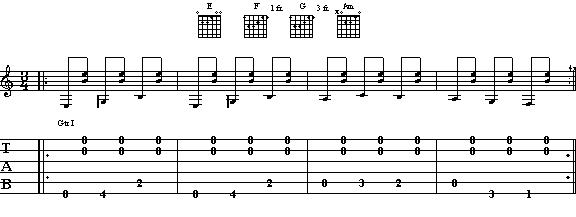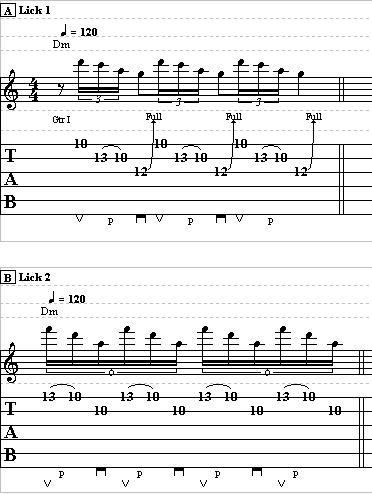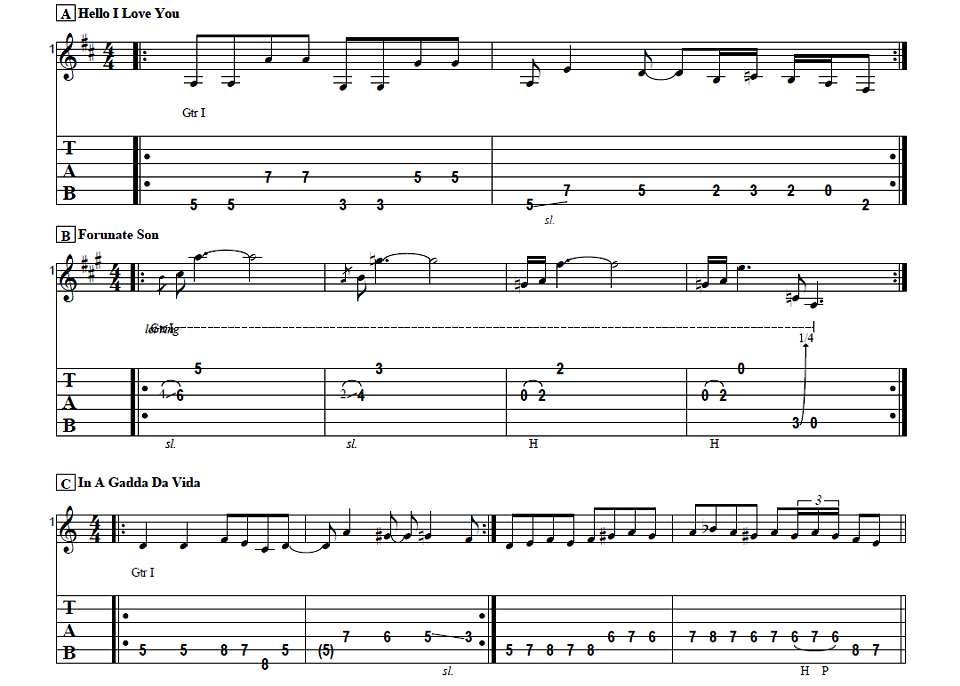Hey, how’s it going this is Darrin Goodman with Guitar Control, I want to show you a cool kind of Celtic riff this is actually a fiddle riff from “Round Table Revival” by Lindsey Stirling and just transposed for guitar.
This is a cool riff to learn, sounds cool it’s fun to play it’s a little challenging it’s kind of give you an idea of cool things that you can do by taking licks and ideas from other instruments and applying them to guitar.
Let’s get close up and take a look at this, so some of the fingerings in this are a little bit awkward kind of some big reaches and stuff. Starting off the very first note is the 7th fret of the 3rd string and we’re going to use your middle finger your second finger and then the next note is the 10th fret of the 2nd string and you’re going to use your fourth finger so that’s a that’s a big bit of a stretch between these fingers and you would like you knew we’d think that oh using your first finger here would be better but the notes that follow it is you know right after this is the reason why I use my second finger so we’ve got 7th fret 3rd string 10th fret of the 2nd string back to the 7th fret of the 3rd string and now we go to the 6th fret of the 2nd string with your first finger and this is why I don’t use my first finger here so I can just drop my finger back down and you’re going to pick that six with your first finger and then you’re going to do a hammer-on to the 8th fret with your third finger and then a pull off back to the six and then to the 9th fret of the 3rd string with your fourth finger and then back to the 7th again where we started with your second finger to the 7th fret of the 4th string and again I’m going to use that finger and reach up grab that because it goes back to the 7th third string then I can just roll my finger back down so that’s the first measure and slowly we have alright so moving on when the last two notes of the first measure when we go to the 4th string the 7th fret then the 7th fret of the 3rd string we follow that with the 6th fret of the 2nd string and then back to the 7th fret of the 3rd string again then back to the 6th fret of the 2nd string again your first finger to the 10th fret of the 2nd string and now this is a really big stretch you know going through the 6th all the way up to the 10th but you can use your fourth finger.
Now if you have problems making this stretch I’ve gone over this with some of my private students and I’ve been getting the oh my fingers don’t stretch that far, my fingers are too short you know well like I’ve said this before and you know many times I’ve got little hands I’ve got short fingers if I can make this stretch anybody should be able to do so.
One of the things you want to make sure you’re not doing is like putting your thumb up here and bending your wrist this way like putting the palm of your hand against the back of the guitar because then it makes it about impossible to make that stretch so if you really come around your wrist is bent like this so it’s like you’re reaching out and pointing back at the guitar you get a lot more movement to be able to stretch between your fingers.
So far we have there’s that ten and then back to the 7th fret of the 3rd string again with your second finger now to the 6th fret of the 2nd string with your first finger to the 8th fret with your third finger back to the six again and now we’re going to do a hammer-on to eight and then a pull-off back to six and then end there with the 9th fret of the 3rd string with your fourth finger so that’s the first two measures and it’s also the first half of this riff so the whole riff so far okay then moving on to the third measure it starts off the same way as the is the previous part so the third major in the first measure are exactly the same thing so you’re just going to be the same thing same fingers actually this one it’s the same but we want to kind of break it up a little bit differently so you’re going to start off the 7, 10, 7, 6, hammer to pull off 2, 6, 9, 7, and now we move up to the 4th string seven roll to the 3rd 7, 6, on the 2nd string and we go back to seven so we want it to be now from there we move up and I just use my second finger as a general rule we move up to the 10th fret and we go 10 on the 2nd string and then roll your finger take a 10 on the 3rd string you don’t want to just barre you don’t want the notes ringing over each other you want them separate and then from there we move up to the 13th fret of the 1st string first finger to the 15th fret of the 2nd string so we have like this and then to the 17th fret of the 1st string and I use my fourth finger 19th fret so after we 13, 15, 17, with your fourth finger back to the 13th fret with your first finger and we’re going to do we’re going to pick that and do a hammer onto 15 with our third finger and pull back up to 13 to the 17th fret of the 2nd string with your fourth finger to the 15th fret of the 2nd string and then that’s where we end the rift so that’s this whole second half of the sequence.
Now we’re going to play the first half and the second half were going to play the whole thing together slowly, now if you if you look at that that song and listen to it it’s like it’s fast I’m not playing it anywhere near as fast as she plays that on the fiddle I haven’t worked out my speed yet to be able to play it as fast as she does but what’s cool about this is it doesn’t really matter because you can play it you don’t have to be playing it like lightning fast for it to sound cool it sounds pretty sweet you know just playing it you know at a more moderate pace.
I hope you enjoyed that and you got something out of it if you liked the video give me a thumbs up be sure to subscribe to our YouTube Channel and we’ll see you in our next video lessons, thanks for watching.
.jpg)



